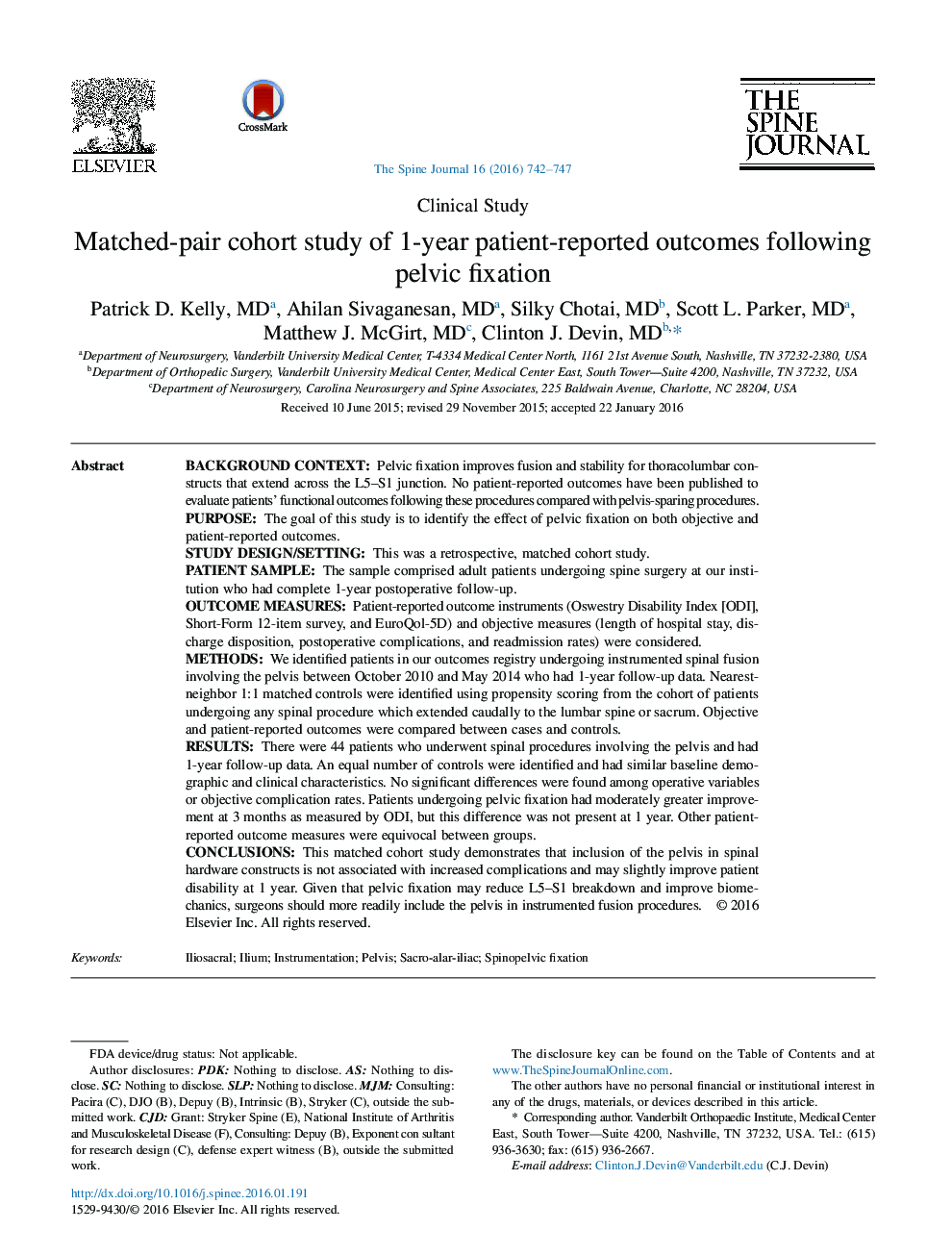| Article ID | Journal | Published Year | Pages | File Type |
|---|---|---|---|---|
| 4095963 | The Spine Journal | 2016 | 6 Pages |
Background ContextPelvic fixation improves fusion and stability for thoracolumbar constructs that extend across the L5–S1 junction. No patient-reported outcomes have been published to evaluate patients' functional outcomes following these procedures compared with pelvis-sparing procedures.PurposeThe goal of this study is to identify the effect of pelvic fixation on both objective and patient-reported outcomes.Study Design/SettingThis was a retrospective, matched cohort study.Patient SampleThe sample comprised adult patients undergoing spine surgery at our institution who had complete 1-year postoperative follow-up.Outcome MeasuresPatient-reported outcome instruments (Oswestry Disability Index [ODI], Short-Form 12-item survey, and EuroQol-5D) and objective measures (length of hospital stay, discharge disposition, postoperative complications, and readmission rates) were considered.MethodsWe identified patients in our outcomes registry undergoing instrumented spinal fusion involving the pelvis between October 2010 and May 2014 who had 1-year follow-up data. Nearest-neighbor 1:1 matched controls were identified using propensity scoring from the cohort of patients undergoing any spinal procedure which extended caudally to the lumbar spine or sacrum. Objective and patient-reported outcomes were compared between cases and controls.ResultsThere were 44 patients who underwent spinal procedures involving the pelvis and had 1-year follow-up data. An equal number of controls were identified and had similar baseline demographic and clinical characteristics. No significant differences were found among operative variables or objective complication rates. Patients undergoing pelvic fixation had moderately greater improvement at 3 months as measured by ODI, but this difference was not present at 1 year. Other patient-reported outcome measures were equivocal between groups.ConclusionsThis matched cohort study demonstrates that inclusion of the pelvis in spinal hardware constructs is not associated with increased complications and may slightly improve patient disability at 1 year. Given that pelvic fixation may reduce L5–S1 breakdown and improve biomechanics, surgeons should more readily include the pelvis in instrumented fusion procedures.
